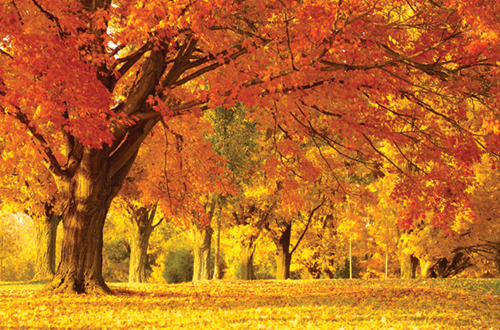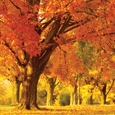
For a young band, the fall semester is a time of refining playing fundamentals, developing technique, and improving reading skills. Also important to the development of such groups is the school year’s first performance; a fall concert lays the foundation for much of what will follow during the rest of the year. Selecting high-quality literature for the fall concert can go a long way in setting up success in subsequent performances and contests.
When selecting music for the first concert of the year, I look for pieces that fit a few criteria. They should be high-quality pieces that the band members will enjoy working on. It is also important that the music presents teaching opportunities or even develops skills and concepts for pieces we will likely perform later in the year. The music should present an appropriate challenge to band members, stretching them musically while remaining within their ability to learn in the time allotted. Finally, all the concert selections should work well together, with contrasting styles, key signatures, and time signatures. Generally, I program a march, fanfare, or overture-type piece as an opener. This is followed by a lyrical work, and a contest-appropriate grade 2 piece.
A primary goal in developing the fall concert is to program music that will help me teach my group how to play as an ensemble. Although the music should push students to grow technically, I do not want band members to get so bogged down with technique that it takes away from their ability to listen to the ensemble and focus on tone quality, intonation, blend, and balance. Students should know the role of their section at various points in the music and be able to watch the conductor.
In my experience, here are some pieces that work really well for the fall concert. These are some of my go-to choices when programming the first performance of the year for my middle school band. Most works are grade 2, with some falling on the difficult side of that level.
Accolade by William Himes (Curnow). This composition has a variety of styles, with exposed passages for practically every section. There are a number of opportunities to work on transitions between styles and tempos.
Appalachian Morning by Robert Sheldon (Alfred). This beautiful, lyrical work has a number of solos.
Apparitions by Brian Balamages (FJH). In addition to being seasonally appropriate for October concerts, this piece introduces young players to contemporary sonorities, uses extended techniques in the percussion section, features a number of soloists, and sounds much more difficult than it is.
Blue Mountain Saga by Stephen Bulla (Curnow). This short work contains many of the rhythms and skills students will need to master before performing more challenging music in the spring.
The Blue Orchid by William Owens (TRN). This work features the trumpet section and has great teaching opportunities for rhythm, style, and transitions.
Broken Bow by Carl Strommen (Alfred). In addition to presenting contrasting sections, this piece emphasizes dotted eighth-sixteenth rhythm patterns and gives bassoon players a chance to play the melody.
A Childhood Hymn by David Holsinger (TRN). This tune will be familiar to many students and is an excellent choice for developing lyrical and expressive playing.
Country Wildflowers by Larry Daehn (Daehn). Another piece that emphasizes lyrical and expressive playing, this work also presents opportunities to work on lifted ends of phrases, which can be quite difficult for young players.
Dance at the Lake of Miramoor by Barry Kopetz (FJH). This lively work comes together fairly easily, allowing directors ample time to work on dance style and phrasing. The piece also contains chromatic passages and a contrasting sustained section.
Dance of the Harlequins by Larry Clark (Carl Fischer). The eighth note-two sixteenth notes rhythm is prevalent throughout. This is a good piece to develop endurance, especially for students in the trumpet and clarinet sections.
Down by the Salley Gardens, arranged by Michael Sweeney (Hal Leonard). Although this composition emphasizes lyricism and expression, it does so while also giving percussionists more to do than in most pieces of this type.
El Tango by Rob Romeyn (Alfred). Accidentals, particularly those that carry through the measure, are found throughout this work.
Electricity (Race Around the Circuit) by Brian Balmages (FJH). This rhythmically challenging piece forces students to count carefully.
The Falling Rain by James Swearingen (Barnhouse). This is a great slow piece on the easier side of this grade level.
Flourish by Sandy Feldstein and Larry Clark (Playintime). This concert opener can be put together very quickly, allowing teachers to focus on style, blend, and balance while also permitting ample rehearsal time for other works.
The Fortune Teller’s Daughter by David Gorham (Wingert-Jones). A great seasonal piece in 34 time, this composition has sections for exposed flutes and trombones as well as a number of accidentals.
Gadget by Randall D. Standridge (Grand Mesa). This contemporary work allows the low brass to shine.
Highland Legend by John Moss (Hal Leonard). The trumpet section is featured by itself at the opening. This piece includes a number of styles and makes a great introduction to 68.
Japanese Pictures by Kevin Mixon (Carl Fischer). Several styles are featured. There are abundant open fifths, which will take careful work on intonation.
Jungle Dance by Brian Balmages (FJH). The clarinet section is featured at the beginning, and the percussion section has great parts throughout. The saxophone section has melodic material.
Last Ride of the Pony Express by David Shaffer (Barnhouse). This composition makes for a great introduction to meter changes and hemiolas.
Our Kingsland Spring by Samuel Hazo (Hal Leonard). There are great opportunities to work on 34 time and transitions between fast and slow tempos. Flutes are exposed at the beginning.
Shackelford Banks (Tale of Wild Mustangs) by Jay Bocook (Hal Leonard). Solo flute is featured at the beginning, the timpani part is difficult, and the low brass have an extended melody. The dotted eighth-sixteenth rhythmic figure is found throughout, and many entrances are on the upbeat.
Shaker Variants by Elliot Del Borgo (Alfred). This is a contemporary take on a melody familiar to students.
Suspended Animation by Patrick J. Burns (Daehn). This piece is great for introducing contemporary harmonies and teaching the concepts of tension and release.
Synergies by Robert Sheldon (Alfred). Contrasting styles abound, and just within the first few measures there are calls for almost every different type of articulation style found in music for young band.
The Tell-Tale Heart by Michael Story (Hal Leonard). This composition is great for a concert around Halloween, and it is a good choice for teaching matching styles on like parts.
A Few Grade 1 Works:
Carnaval by Michael Sweeney (Hal Leonard). This piece features trumpets at the beginning and gives young percussionists a chance to shine.
Colliding Visions by Brian Balmages (FJH). The two contrasting sections offer a number of teaching opportunities, and the saxophone section is given more to do than in many works at this grade level.
Dark Fortress by Rob Grice (Daehn). This fast piece has low woodwind and brass parts that are more involved than many pieces at this grade level.
Drive by Mark Williams (Alfred). This is a great introduction to jazz styles and harmonies.
Egyptique by William Owens (FJH). The melody moves around in scale-like passages that will challenge students without overextending them.
To Reach the Summit by Michael Oare (Hal Leonard). This extremely simple piece works well as a concert opener and can be used to teach independence of line and augmentation.
Top Secret by Larry Neeck (Barnhouse). A fun, tuneful piece that students and audience alike will enjoy, this piece reinforces a variety of articulation styles and contains question-and-answer phrases between the woodwinds and brass.
Recommended Marches
for Grades 1 & 2:
Activity March by Harold Bennett, arranged by Larry Clark (Carl Fischer)
The Big Circus by Robert E. Foster (Wingert-Jones)
Legacy March by Steve Hodges (Alfred)
March of the Irish Guard by James Ployhar (Carl Fischer)
Guadalcanal March by Richard Rodgers, arranged by James Curnow (Hal Leonard)
Military Escort by Harold Bennett, arranged by Larry Clark (Carl Fischer)
Newcastle March by Johnnie Vinson (Queenwood)
Norland March by John Edmondson (Queenwood)
Pride of the Regiment by Nancy H. Seward (Wingert-Jones)






